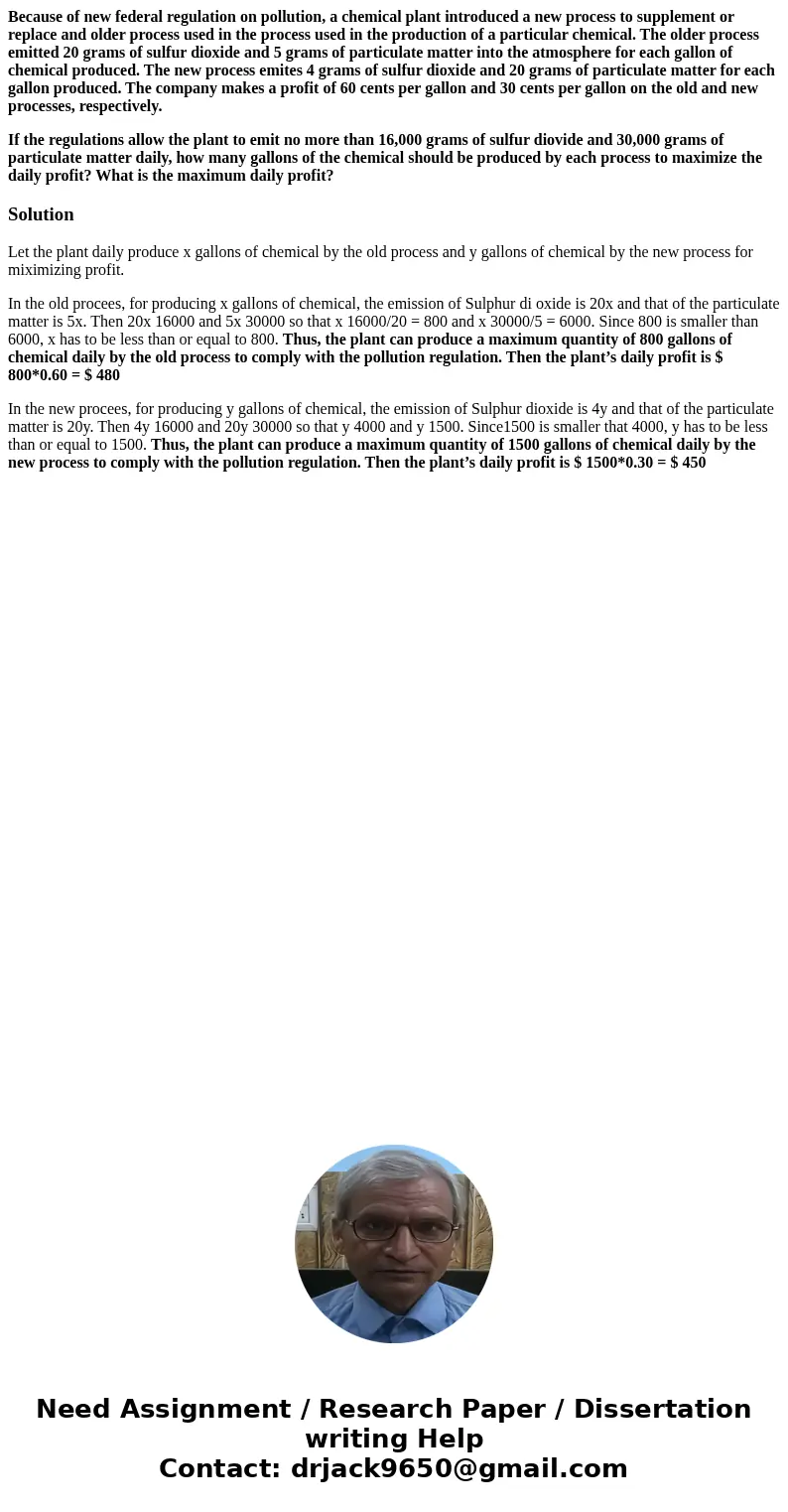Because of new federal regulation on pollution a chemical pl
Because of new federal regulation on pollution, a chemical plant introduced a new process to supplement or replace and older process used in the process used in the production of a particular chemical. The older process emitted 20 grams of sulfur dioxide and 5 grams of particulate matter into the atmosphere for each gallon of chemical produced. The new process emites 4 grams of sulfur dioxide and 20 grams of particulate matter for each gallon produced. The company makes a profit of 60 cents per gallon and 30 cents per gallon on the old and new processes, respectively.
If the regulations allow the plant to emit no more than 16,000 grams of sulfur diovide and 30,000 grams of particulate matter daily, how many gallons of the chemical should be produced by each process to maximize the daily profit? What is the maximum daily profit?
Solution
Let the plant daily produce x gallons of chemical by the old process and y gallons of chemical by the new process for miximizing profit.
In the old procees, for producing x gallons of chemical, the emission of Sulphur di oxide is 20x and that of the particulate matter is 5x. Then 20x 16000 and 5x 30000 so that x 16000/20 = 800 and x 30000/5 = 6000. Since 800 is smaller than 6000, x has to be less than or equal to 800. Thus, the plant can produce a maximum quantity of 800 gallons of chemical daily by the old process to comply with the pollution regulation. Then the plant’s daily profit is $ 800*0.60 = $ 480
In the new procees, for producing y gallons of chemical, the emission of Sulphur dioxide is 4y and that of the particulate matter is 20y. Then 4y 16000 and 20y 30000 so that y 4000 and y 1500. Since1500 is smaller that 4000, y has to be less than or equal to 1500. Thus, the plant can produce a maximum quantity of 1500 gallons of chemical daily by the new process to comply with the pollution regulation. Then the plant’s daily profit is $ 1500*0.30 = $ 450

 Homework Sourse
Homework Sourse